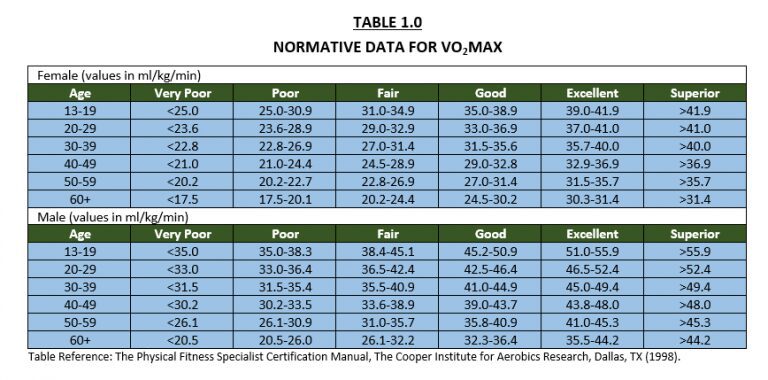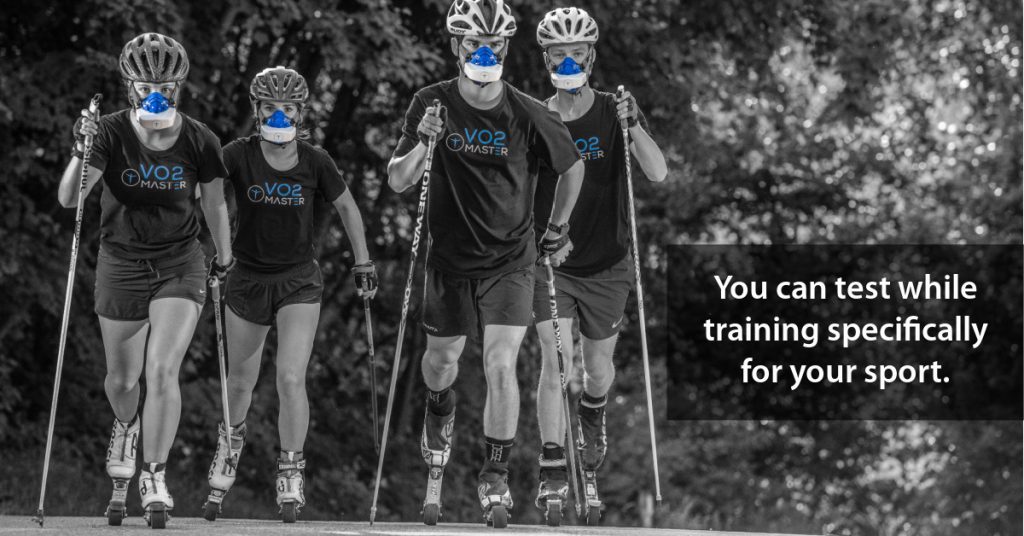Part 3: How to Train Based on Metabolic Test Values
This is the third article of our Introductory Series. If you’re new to metabolic analysis or need a refresher on the subject, then this series is for you. On the other hand, if you’re experienced in the field of VO2 analysis, then we encourage you to check out our Advanced Series of articles. In ourContinue reading "Part 3: How to Train Based on Metabolic Test Values"

This is the third article of our Introductory Series. If you’re new to metabolic analysis or need a refresher on the subject, then this series is for you. On the other hand, if you’re experienced in the field of VO2 analysis, then we encourage you to check out our Advanced Series of articles.
In our previous Introductory Series article, we outlined how the body uses oxygen. Now, we’re going to examine how to best design your training given metabolic test data – in particular, your VO2max score.
As we have identified, a myriad of data is determined when conducting metabolic testing, such as VO2max, respiratory frequencies and tidal volumes. We look to any changes in these measurements (from previous tests) to determine if training is in fact positively affecting the results.
You’ll recall that your VO2max (measured in ml/kg/min) is the maximum amount of oxygen you can utilize during exercise, but for all intents and purposes, it’s a marker of just how fit you actually are.
Your VO2max value is an indication of your endurance performance potential, and it can be used to help monitor your training routine over time. It’s advised to conduct metabolic testing before you begin a training program and periodically to retest to identify whether the training is having the positive effect you are expecting.
What’s a good VO2max score?
Simply put, it varies by individual and their activity of choice. A sprinter, for example, will possess a lower VO2max score than a long-distance runner, but that may not make them any less of an athlete.
For your reference, Table 1.0 outlines typical VO2max scores for men and women by age category, based on cumulative data collected from thousands of athletes.

Why VO2max Varies for Women
The trend of lower of VO2max scores in women is a result of size, muscle mass, oxygen carrying capacity and lower total blood volume.
Information is Power
Your VO2max score and additional metabolic test values, such as your Ventilatory Thresholds, permit you to craft a personalized training plan for whatever goal you have—improving cycling endurance, mobilizing fat stores, but mostly, becoming the fittest and most efficient athlete you’re capable of being.
Using your metabolic data to guide training will help ensure that you’re training productively. Continued regular testing will help ensure that whatever training program you’re on is having the effects you want. If the training is working, then great – you should continue with it. If the training isn’t working, then consider modifying your program, and try a different approach.
It is recommended that you pursue a training plan for a number of weeks before retesting, and then make a decision based on updated metabolic data.
How to Craft a Training Plan Based Off Your Metabolic Data
If you own or have access to a VO2 Master Analyzer, you can use it to measure your VO2max and other metabolic factors at any time. If not, then you’ll need to meet up with a person or facility that carries a metabolic tester, which may be your coach, your physiotherapist, or a friend. Metabolic testing has become more accessible in recent years due to the affordability and popularity of the VO2 Master Analyzer.
Another great thing about the VO2 Master Analyzer is that its portability permits you to test while exercising in your sport of choice. For example, using a skatemill if you’re a hockey player, outdoors on a bicycle for cyclists, or on roller skis for cross-country skiers.

Without determining your personalized numbers, you’re essentially running blind and simply guessing as to which type of training is working.
When you complete your VO2 Master Analyzer metabolic test, look to see where your limitations are. For example, this may be your volume of breathing (tidal volume). In this case, if a person can’t take a big enough breath, then they will need to breathe faster to eliminate their CO2 build up. Breathing faster is inefficient and wastes energy – energy that could instead be applied to running faster.
You may see your VO2max as a limitation, in which case you need to identify which part of the VO2max contribution is causing the issue. The contribution to VO2max is affected by numerous factors, such as the size of your heart, how fast it can beat, the carrying capacity of oxygen in your blood, or your muscles’ ability to extract oxygen. The VO2max number itself will give you an indication of your fitness ability; however, determining the exact factor is a complicated discussion and one that we will delve into in our Advanced Series.
If your metabolic assessment identifies a limitation in aerobic fitness, your training regimen should be focused on low-intensity, steady state exercise. To improve your performance, it’s advised that you train at this heartrate for 60 minutes, four to six times a week, and as often as you’re able to fit it into your schedule and recover from the sessions.
After 6-8 weeks, retesting will allow you to determine which beneficial effects have taken place. If improvement is being seen, then the training program should not be changed. If positive effects are not seen, then consideration should be given to modifying the plan.
Retesting your metabolic data regularly is very important in order to gauge progress.
It should be recognized that factors affecting and limiting a person’s fitness are extremely individual in nature. This is the problem with providing a universal plan or recipe that is meant to be applicable for a group of athletes. For example, two people with the same VO2max scores may have different limitations – one may have a respiratory limitation (e.g., exercise-induced asthma) while the other may have an oxygen delivery limitation (e.g., low iron leading to low total hemoglobin, which turn leads to low oxygen carrying capacity). Therefore, the specifics of their respective training programs should be different to effectively address each of their limitations (this will be covered in an advanced series article in the future).
That said, here a program that is likely to assist in the general case of improving one’s VO2max.
The VO2max Training Plan
The training program outlined below is very uncomfortable to complete. However, if you keep it up for 6 weeks, then you’ll likely achieve a 10 percent higher VO2max stat.
Please note: retesting is recommended at any time that a change is noticed and a shift a training intensity may be required. There is a real risk for burnout and decreased performance if intensities are too high or if the intervals are too long and this is why consistent testing is so important.
Directions
Complete 60 minutes or more of low-intensity endurance work for 3 to 4 times a week. Then try adding in the following workout once per week for 6 weeks and retest weekly, if possible, or at the end of the 6-week period to watch for the changes that you expect to see.
Workout 1: 45 minutes total
Complete on a bicycle, treadmill, track or using other suitable training equipment.
- Perform 3 rounds of 30 seconds of maximal intensity effort, followed by 2 1/2 minutes of rest.
- That’s one set.
- Rest for 6 minutes after each set.
- Repeat the set 3 times.
- Complete once per week for 6 weeks.
If this workout is benefitting you but getting easy then increase the number of reps/sets to make it more challenging.
After 6 weeks, if positive changes are happening, then continue with this plan, because it’s working. If you see a plateau in performance or no change is occurring, then you can try one of these alternate workouts.
Workout 2 (Alternate)
Complete on a bicycle, treadmill, track or using other suitable training equipment.
- Perform 3 rounds of 90 seconds of maximal intensity effort, followed by 2 minutes of rest.
- That’s one set.
- For the first two weeks, stick to one set.
- For weeks 3-6, complete 2 sets with 6 minutes of rest between the two.
Workout 3 (Alternate)
Complete on a bicycle, treadmill, track or using other suitable training equipment or via jump squats.
- Perform 6 rounds of 10 seconds of maximal intensity effort, followed by 3 minutes of rest.
- That’s one set.
- For the first two weeks, stick to one set.
- For weeks 3-6, complete 2 sets with 8 minutes of rest between the two.
In reality, VO2max is one measure of fitness potential rather than fitness itself. This means that knowing your VO2max and other metabolic information is a useful place to start any training plan. You should be encouraged and expect changes over time in measurements of parameters VO2max, Ventilatory Thresholds or personal records over a particular distance. VO2max is a useful metric, but it is only one number in a myriad of values that the VO2 Master Analyzer can provide.
—
In the next Introductory Series article, we’ll examine how to accurately measure maximal oxygen consumption.
